How to Perform Digital Transformation with E-commerce Personalisation
Is it real? Or have we woken up in some sort of prolonged dystopian nightmare? It’s very possible that this is a series of questions that have crossed your mind over the past few weeks and months… We’re living through very strange and transformational times; changing the way we live, and conduct business, is the only way that we will survive.
By now we all know the new rules for life: stay indoors, practice social distancing, wash your hands, don’t stockpile, be kind. But what are the rules for business? Companies all over the globe are now navigating ‘the new normal’; shutting down their brick and mortar premises and tackling the logistical nightmare of managing their team remotely, or stopping production altogether.
Now, here at Hurree, we’re lucky - not just because it’s generally a great place to work but because we have always had the option of working from home when we needed to. So the shift to fully remote working wasn’t that cataclysmic.
Seeing all the upheaval going on, however, we can’t help but wonder about the less-prepared companies. I’m talking about brick and mortar stores that previously may not have focused on their online presence much, or at all! What will they do; how will they stay afloat when forced to shut their doors?
These are the companies that need to take this time to protect their business through forward-thinking digital transformation tactics.
How can digital transformation save your retail business during crisis time?
Salesforce defines digital transformation as “the process of using digital technologies to create new — or modify existing — business processes, culture, and customer experiences to meet changing business and market requirements”.
Beyond technology, digital transformation revolves around the customers; how you reach them, speak to them and ultimately, how you make their lives easier. And according to top economic advisors, the current pandemic situation is going to accelerate the rate at which businesses adopt digital transformation tactics.
Perhaps you have a website with a neglected e-store, or maybe your physical shop was your only way of reaching customers and you need to start from scratch. This is the time to transform yourself and your staff into budding e-commerce development masters by opening up your products to a digital audience that needs them now more than ever.
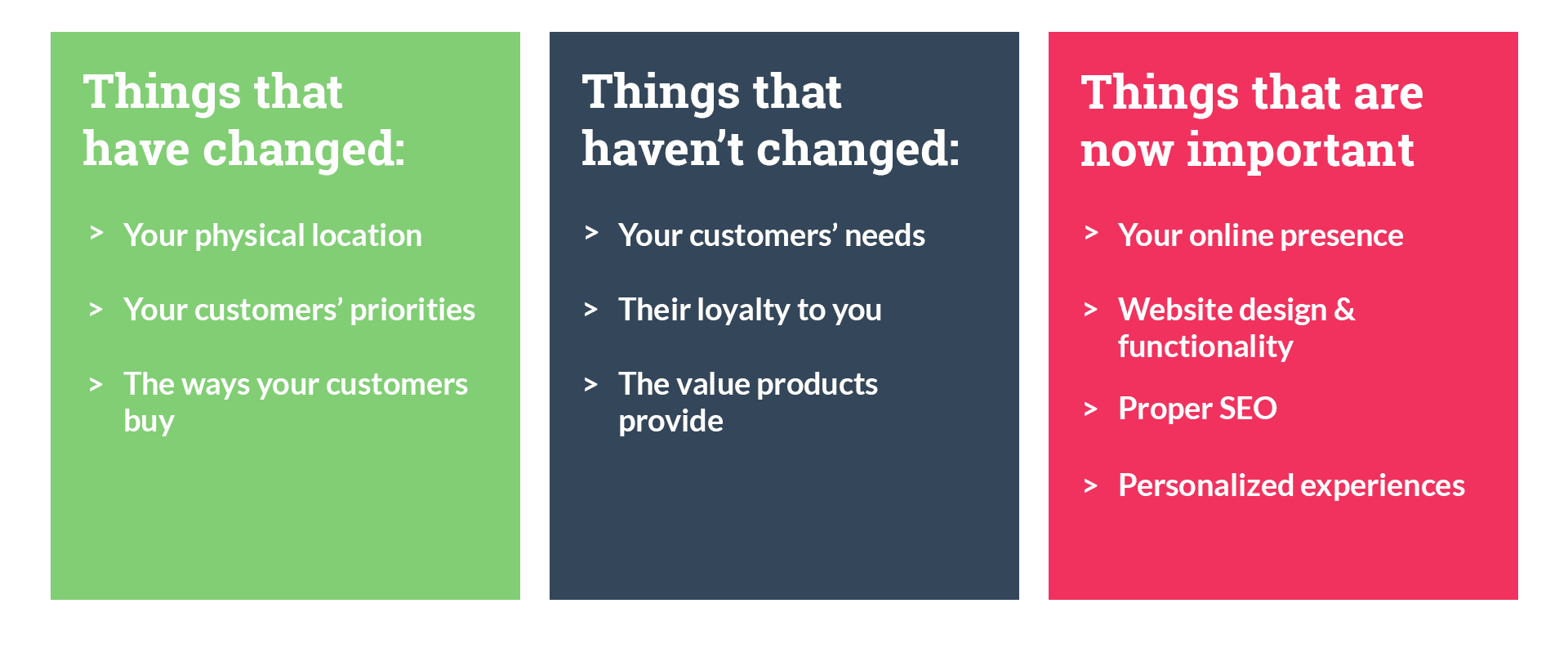
After all, your products might be considered essential for survival, so if you were to stop trading now it could be detrimental to your customers. Or maybe your products alleviate boredom which is also super important right now to ensure we flatten the curve through vital social distancing measures!
Isolation does not equal the total halt of consumerism. In fact, Attentive has recorded a boost in online sales over the past month with sales trending upward by 20.3%. Obviously, traditionally ‘essential’ product groups are going to be performing better at the moment. For example, CNBC reports that shoppers are buying 4 to 10 times more food; staples, 3.5 to 5 times more paper products, and 2 to 6 times more in personal care and household cleaning supplies. But we also know that online purchases of electronic items are up +53%, home furnishings are up 13.3% and pet supplies are up 41% - so, it’s clear that the stay-at-home shoppers are still going strong.
Investing this downtime in digital transformation tactics and perfecting your online customer experience could provide the interim revenue you need to stay afloat. More so, taking your business digital will strengthen your relationship with current customers and enable you to find new prospects online!
Personalisation is the key to retail digital transformation
Just this month, the Harvard Business Review declared that the goal of digital transformation is to improve customer satisfaction and intimacy. So, you see, when we talk about digital transformation, we mean more than just throwing up a quick e-store with a catalogue of your products and linking it to your PayPal account...
No! You need to go the whole hog on this one and, hey, why not! You’ve got the time right now, I see you on your 4th Netflix episode of the day...
So how do you do it? Well, if intimacy is the goal, personalisation is the striker - the driving force that adds up to a win and sets you apart from others in your industry. E-commerce personalisation is the process of using customer data to inform elements of the customer journey, making experiences more streamlined. Data is collected from website browsing behaviour, social media, email, and voluntarily submitted information, allowing e-commerce retailers to personalise customer experiences based on each particular customer’s needs.
Instapage reports that 77% of consumers would rather choose, recommend, or pay more for brands that provide a personalised experience. The data shows that personalisation builds trust with your customers by delivering real value in their customer experience.
E-commerce personalisation comes in many forms, from basic to highly technical. 75% of customers want to be sure that companies know them by their name and remember their previous purchases. So efforts taken by retailers like Tesco to personalise their homepage on their online delivery store will certainly make their users feel welcomed and acknowledged.
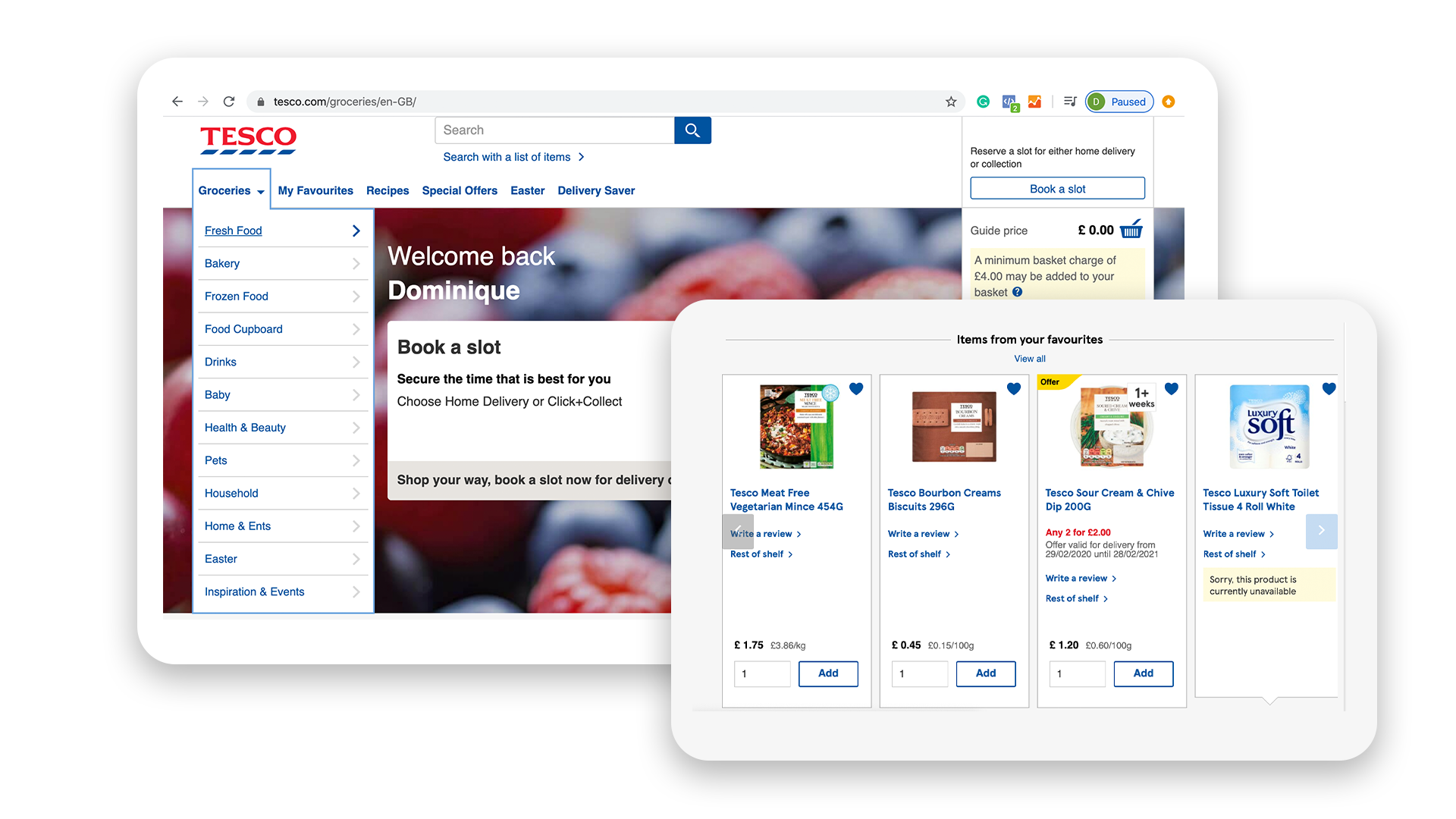
Tesco’s store greets customers using their first name and reminds them of previous purchases. But why stop there when you could go so much further?
Customers also want you to use their data to recommend new products that they might enjoy and make them feel special in the process. The best kinds of e-commerce stores couple their personalisation tactics with market segmentation strategies to produce the most personal experience possible for customers.
You can use market segmentation for effective personalisation in e-commerce
A combination of market segmentation and personalisation will leave your customers feeling like exclusive VIPs. So much so that 83% of consumers are actually willing to share their personal data to make sure they get this special treatment!
So let’s look at a few combinations that you can use to wow your potential customers:
On-site Personalisation
Homepage Personalisation + Lifecycle Segmentation
Think of your homepage as your store window, when people are walking past don’t you want to catch their attention and draw them in? The problem with your physical store window is that it can’t tell whether Joe-Schmoe on the street had visited your shop before or not… Well, your website can!
What better way to catch the attention of a shopper than to use segmentation to determine which users are brand new and which are loyal returning customers? Better still, how about using that information to offer them a personalised discount based on their lifecycle stage.
What better way to catch the attention of a shopper than to use segmentation to determine which users are brand new and which are loyal returning customers? Better still, how about using that information to offer them a personalised discount based on their lifecycle stage.
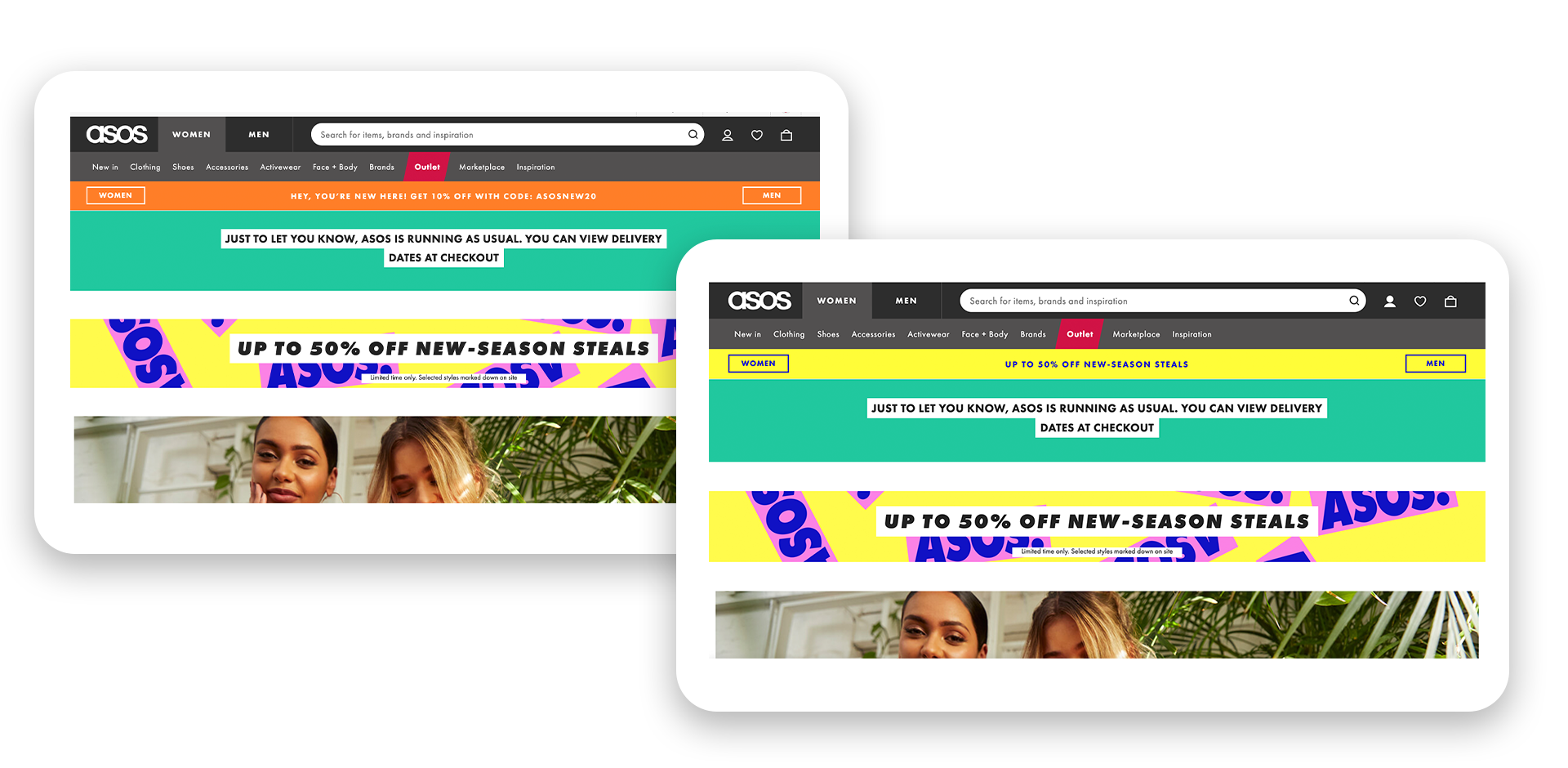
That’s exactly what ASOS does, as shown in the example above. The online retail company takes their customers seriously stating: “We may have 18 million active customers across 240 different countries and territories, but we always try to think of them as individuals and give them the care they each deserve”. All that personalisation has added up to some really happy customers, so happy that they voted ASOS 2nd place in the UK customer satisfaction survey, beating top retailers John Lewis, Marks & Spencer, and Waitrose!
Product View Personalisation + Psychographic Segmentation
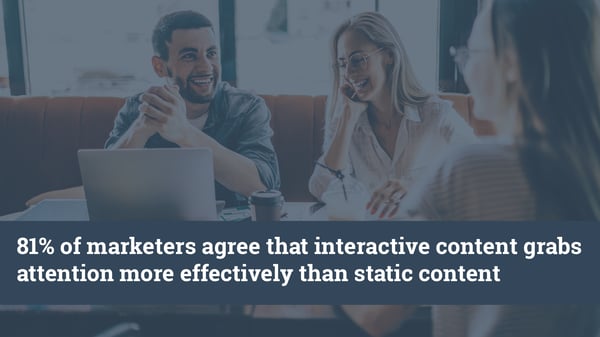
Source: Content Marketing Institute
If you read our digital marketing trends for 2020, you will be aware that interactive content is set to be a big player this year. Research shows that 91% of consumers are actively looking for more interactive content online. That’s a lot of potential customers that want to interact with your brand in return for some fun and maybe even some personalised content!
Why not take a leaf out of, online home-furnishings store, MADE’s, book. MADE’s style inspiration quiz is an engaging piece of interactive content that allows their customers to find their personal style through self-segmentation.
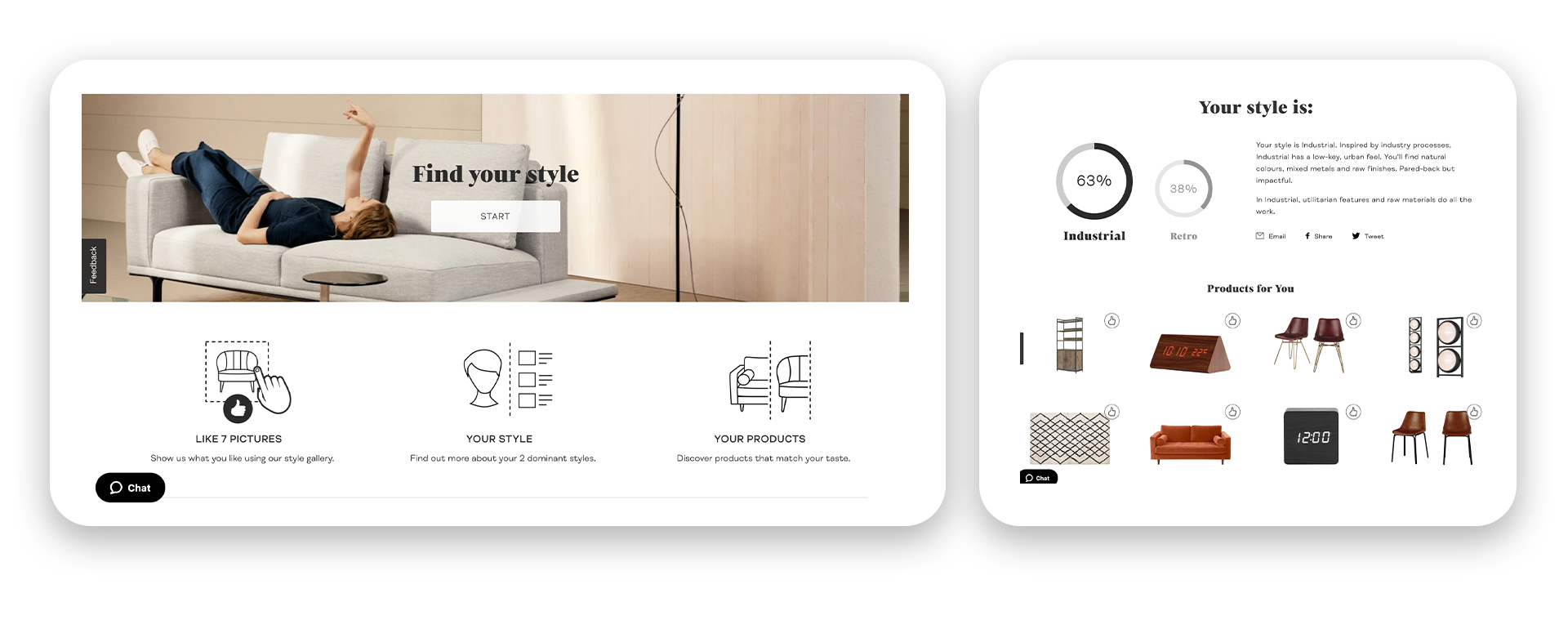
Then, the clever little elves at MADE use the customised information gathered in the quiz to prioritise which products they show their customer to ensure they see the items they’re most likely to love! MADE take this one step further, by also using the behavioural data gathered from which products their customers click on to suggest similar products that they might enjoy.
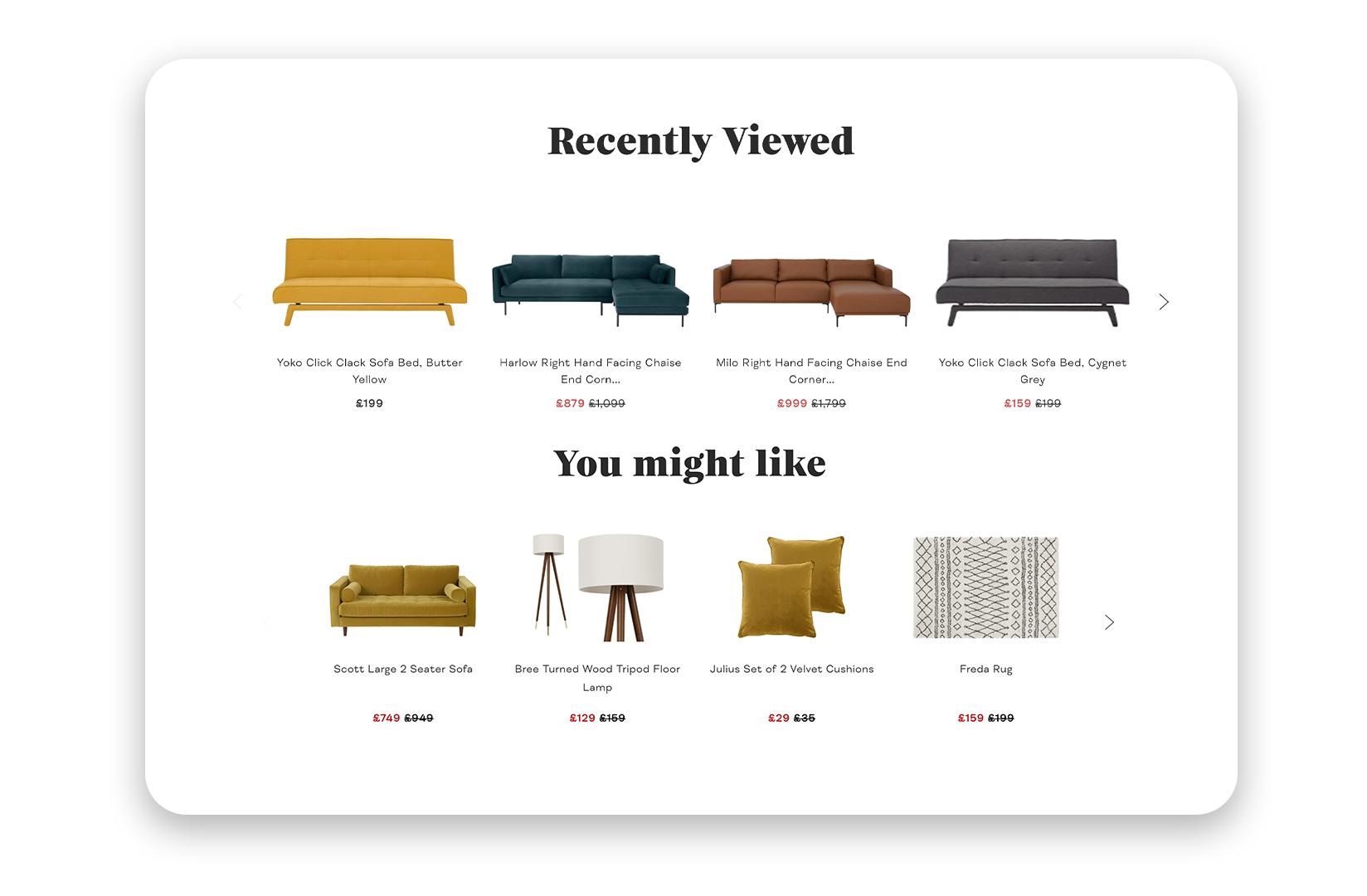
The MADE.com experience is so personalised, it’s almost as if you’ve hired an interior designer who can also read your mind. Meaning, their customers can get an instagram-able home for less money and with less stress. They’ve truly cracked the code - bravo!
Off-site Personalisation
Email Personalisation + Behavioural Segmentation:
With everything going on in the world right now, internet browsing is at an exponential high and thus, it makes sense then that cart abandonment trends would follow this curve… And guess what, they do! The retail sector alone has seen cart abandonment rates rise from 73.48% to 84.51% in March 2020.
So even with all this wonderful website personalisation, your customers are still very likely to get cold feet before the point of conversion. Don’t get yourself down about it though, this is not the end of the road. Off-site segmentation and personalisation are just as important in delivering an end-to-end personalised experience to your customers.
Email marketing is a tried and tested way to ensure your customers are reengaged after they abandon a cart on your website. Research from SaleCycle shows that abandoned cart emails have a 50% open rate and over ⅓ of these clicks lead to a conversion on site. That’s impressive, right?
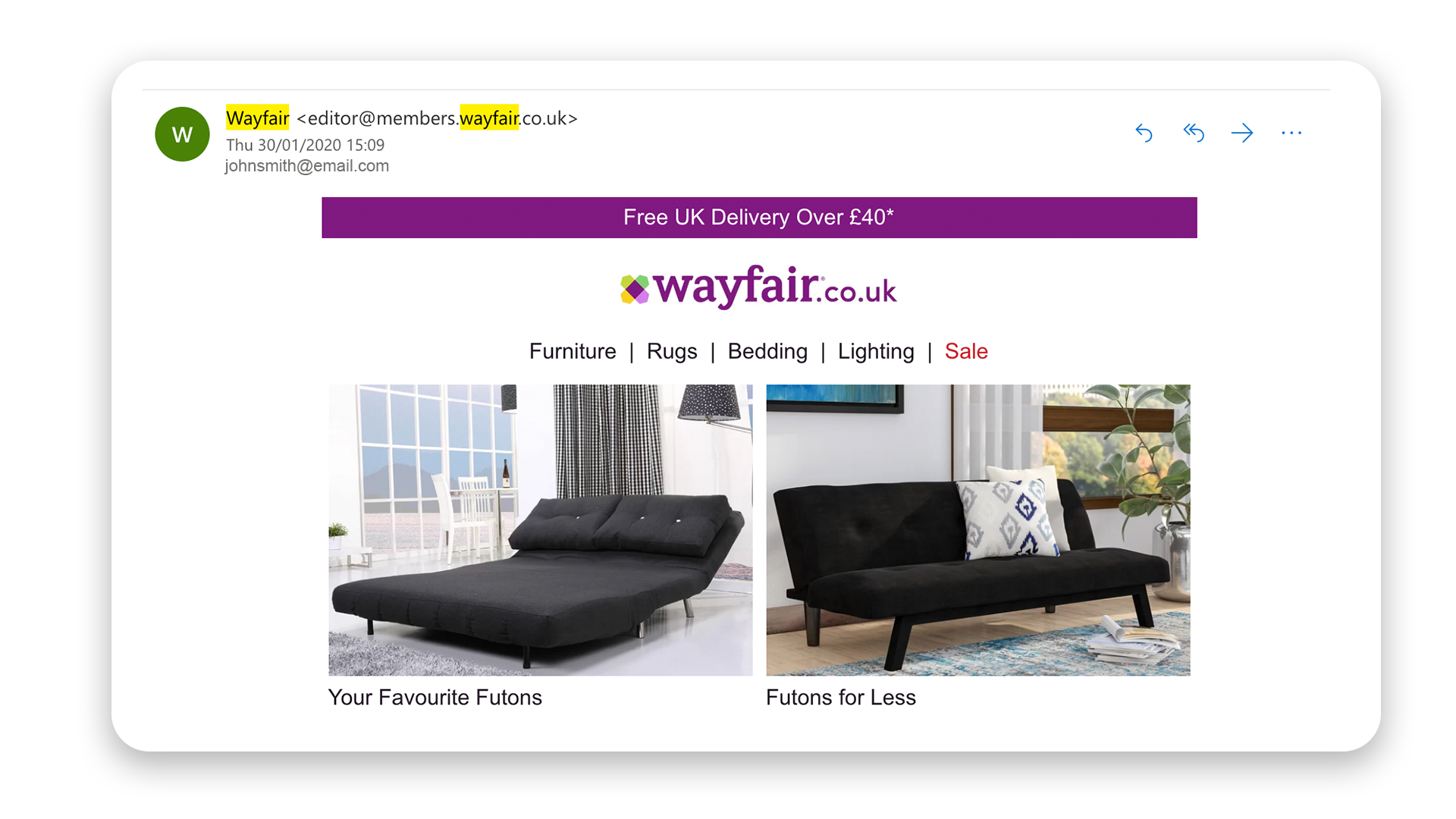
But how do you personalise an email, beyond the basic Hey {name} tags? Check out this example from Wayfair, an online furniture store whose revenue has actually doubled in the last month of lockdown! I recently used their e-store to search for futon beds but after browsing I decided not to complete the purchase. A few days later, I got the email above and I was intrigued.
Using a combination of behavioural segmentation and email personalisation, Wayfair was able to craft an engaging email that includes the item I was viewing and other options that they think I may enjoy. Plus, they’ve even included a little discount banner - maximum temptation! Now, hand me my credit card...
Digital Ads Personalisation + Behavioural Segmentation
It’s a fact of e-commerce trading that only 2% of website visitors convert first time. Your average consumer will actually make around 6 visits to a website before they decide to spend their hard-earned bucks and that’s without an ongoing global crisis.
Once again, you’re in a position to personalise your user’s off-site experience with your brand. This time, it’s digital advertising that is the perfect tool to reach your customers - after all, WhatsApp, Facebook, and Instagram have seen a 40%+ increase in usage since the pandemic emerged.
You can create personalised social media adverts via the implementation of a tracking pixel within your website. The pixel will tag the IP address of a user that visits your website and log their activity, you then load this pixel data into your third party advertising platform and apply creative content that will encourage re-engagement. This is known as remarketing.
Remarketing techniques allow you to segment the total audience on social media, ensuring that your advertising is only delivered to people who have already visited your website. The pixel allows you to personalise the ad content that each audience member is served based on a specific action they have taken such as viewing a Gold Bicycle helmet on Bobbin Bicycles, for example. 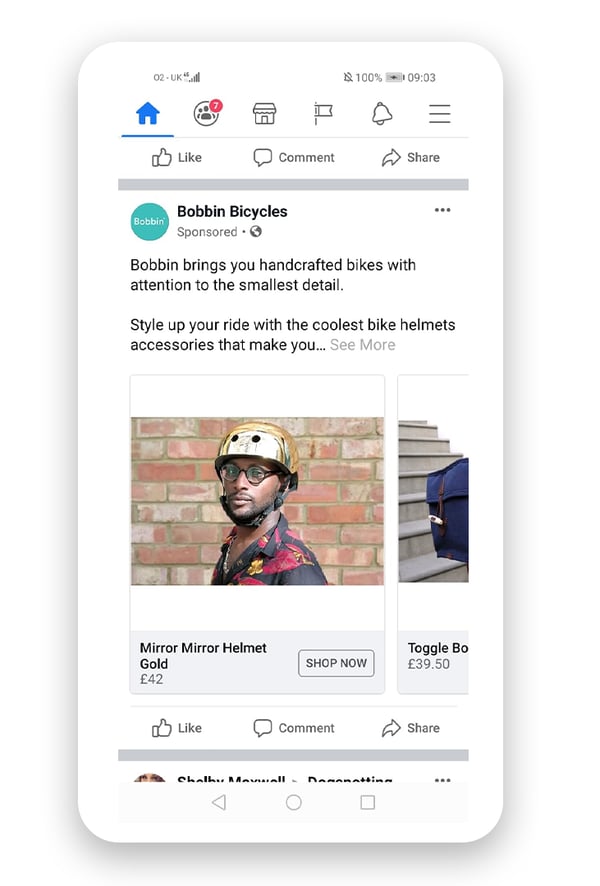
As a planet, we’re going through something unprecedented; it’s more important than ever before to be kind, foster human connection and make things as easy as possible for each other. I know that this might not seem important right now, but implementing these personalised approaches will allow your customers to retain a little bit of the warmth they’re used to experiencing in your physical store environment, but at home.
Optimising your digital presence so that your users can find your store online, complete a purchase with ease, and even become evangelists of your business on social media, is undoubtedly going to be beneficial for your company in the post-pandemic economy. Things are going to be tough for a while, but digital transformation is the best investment that you can make to ensure your company keeps going, well into the future.
Share this
You May Also Like
These Related Stories

Facebook & Google Ads: How to Get Started with Remarketing [made easy]

Behavioural Segmentation: 3 Case Studies


